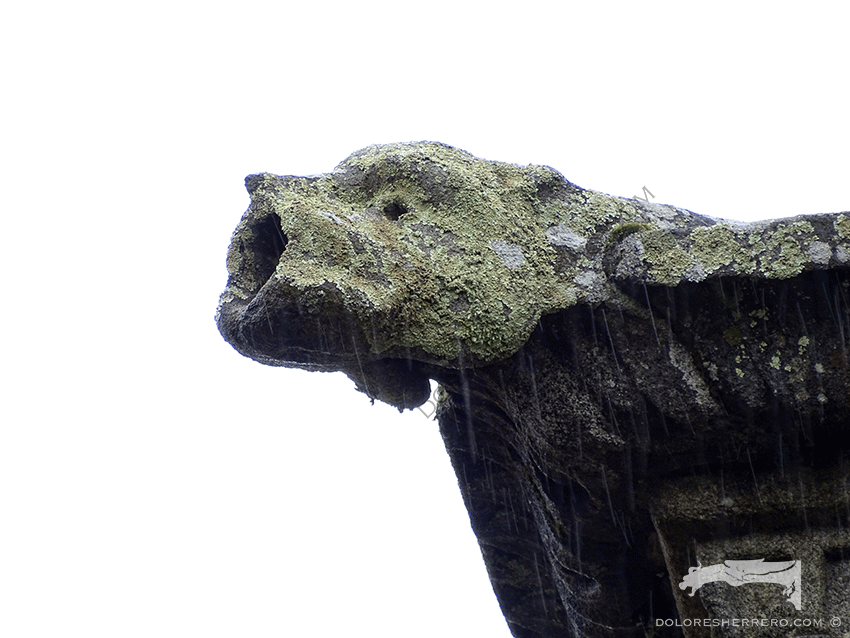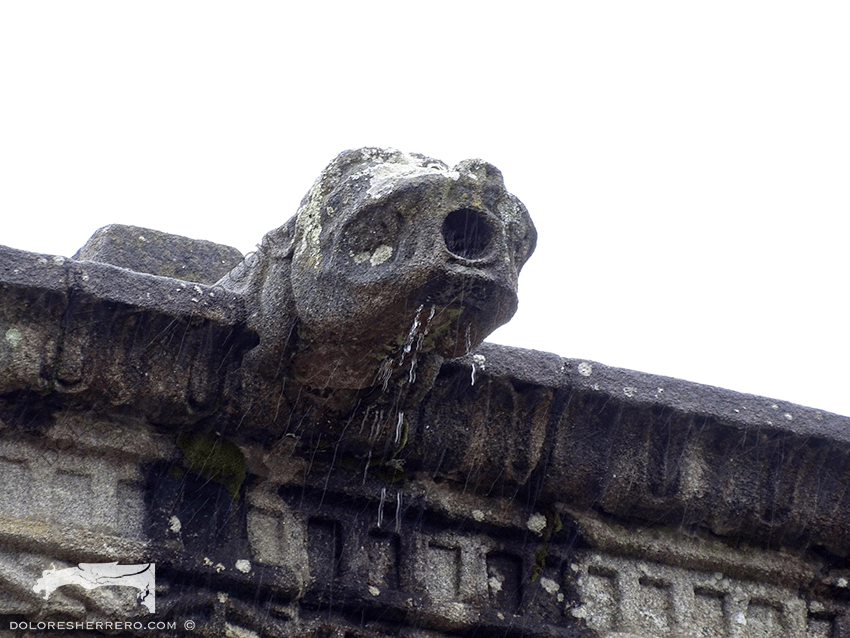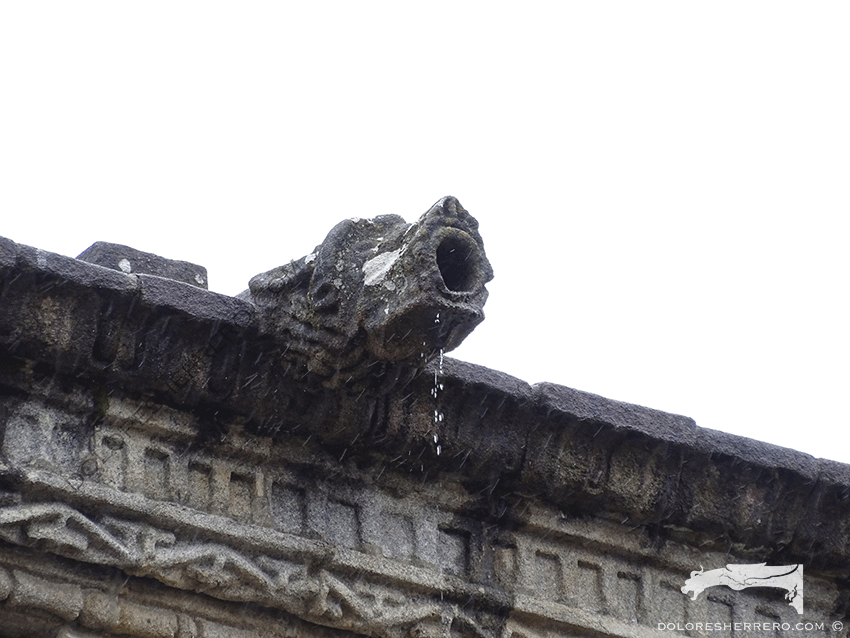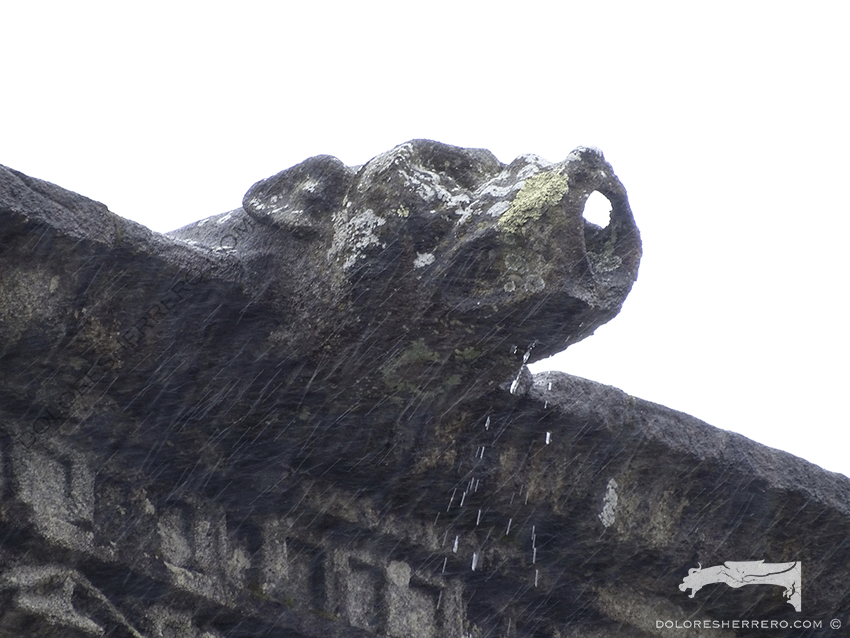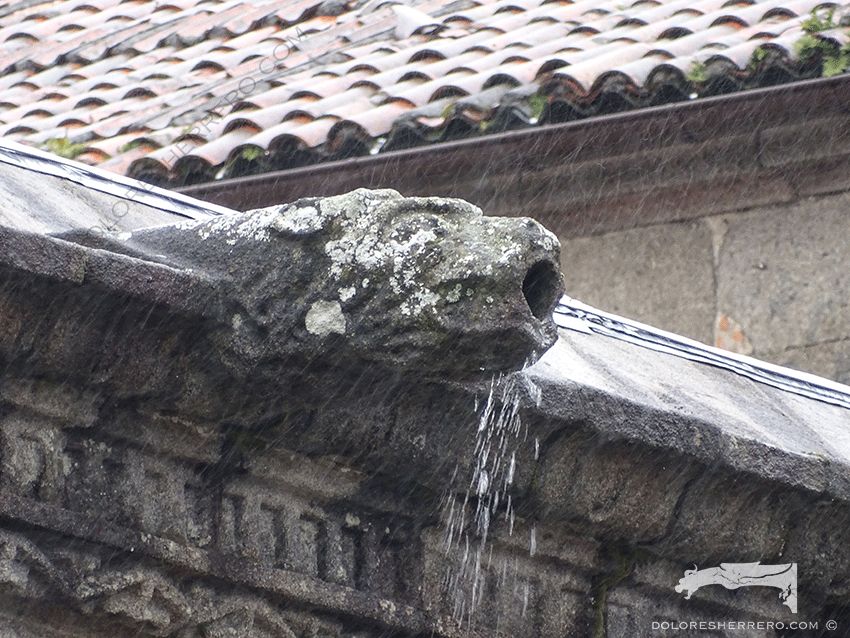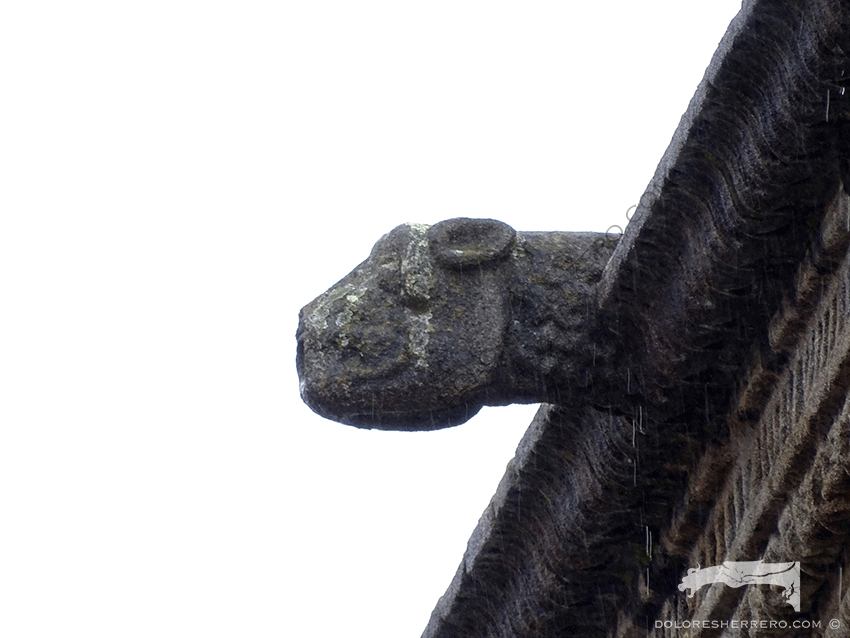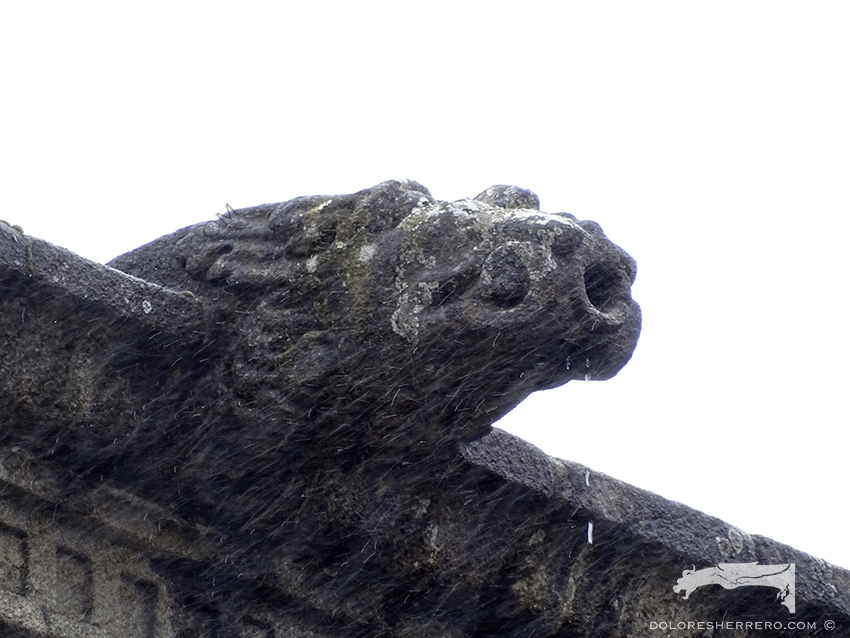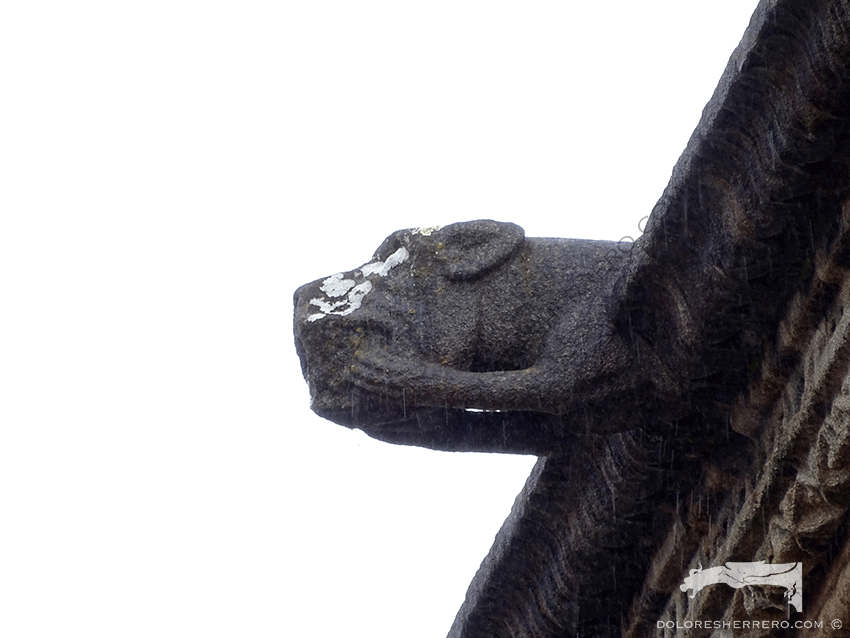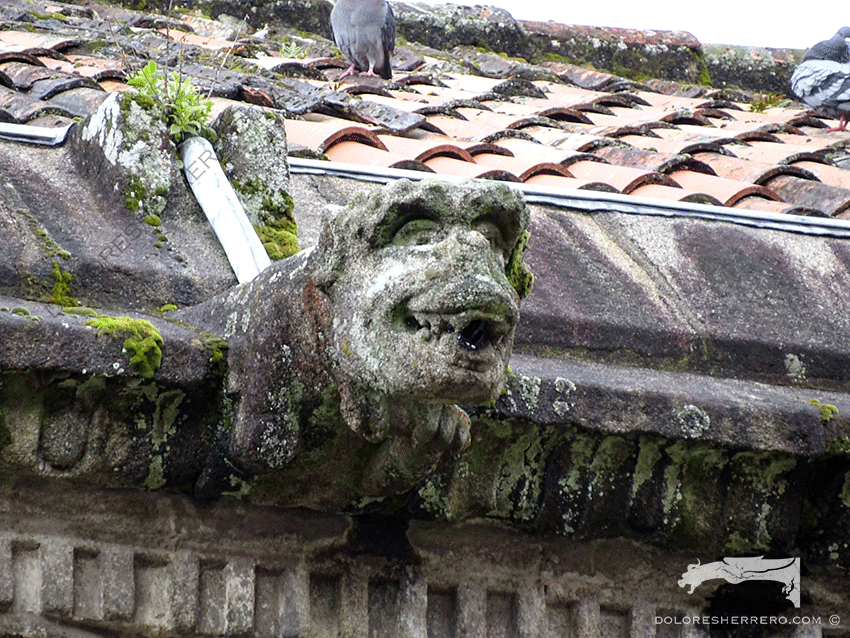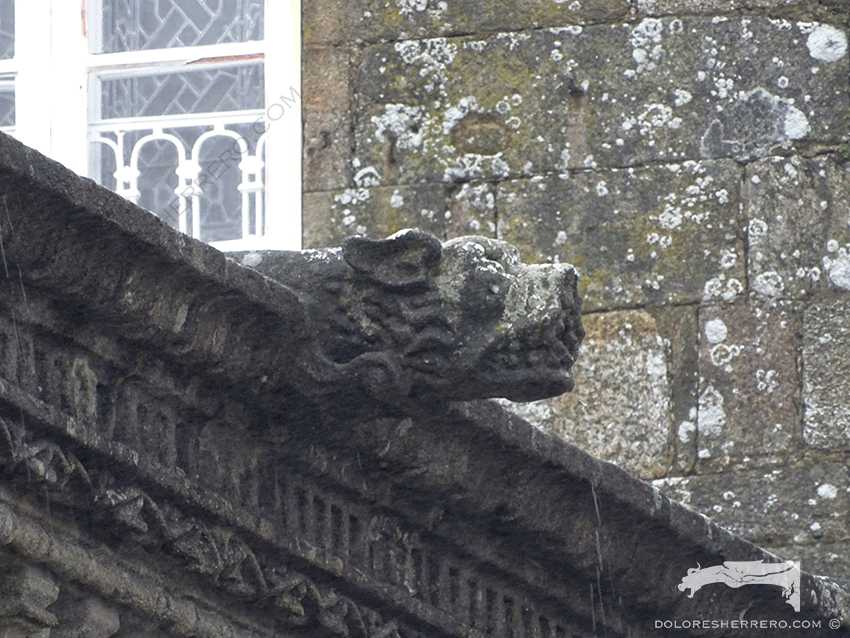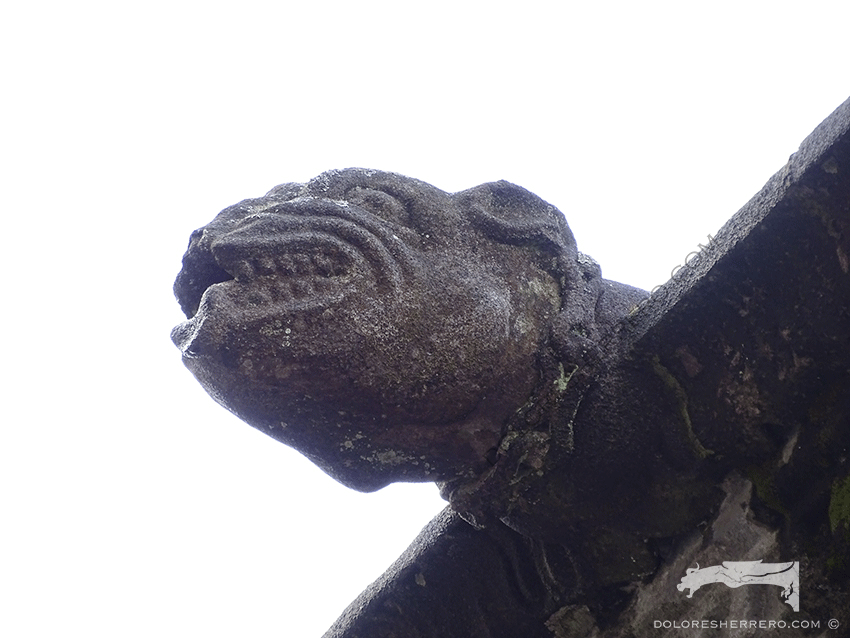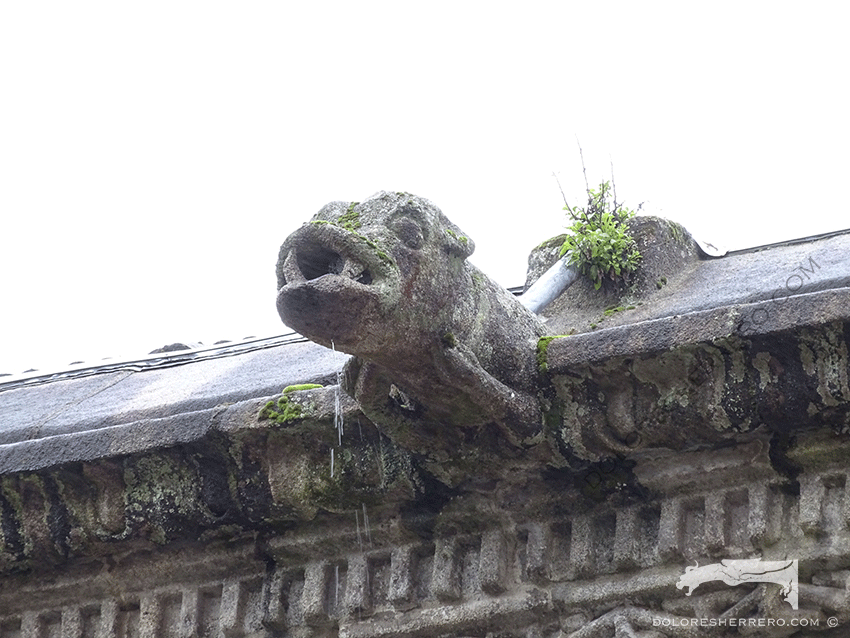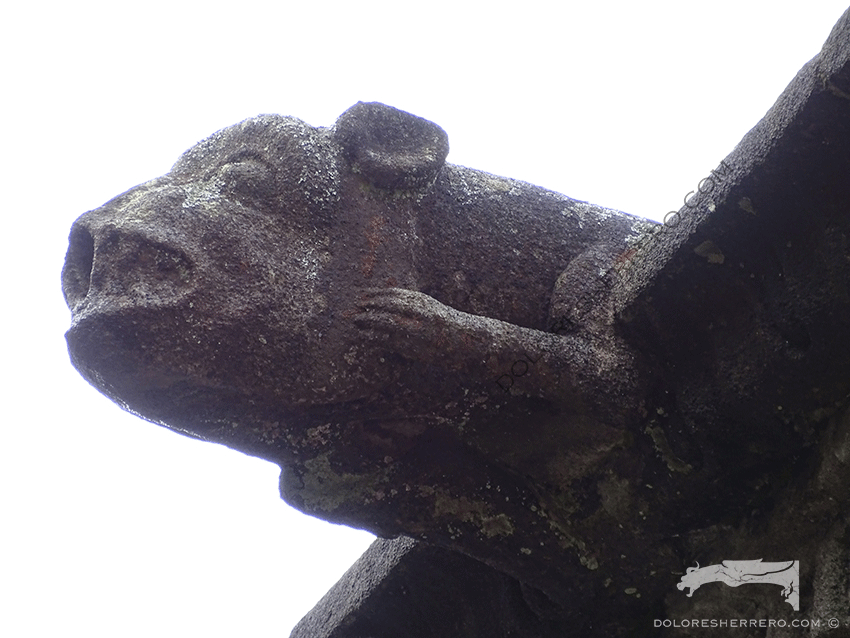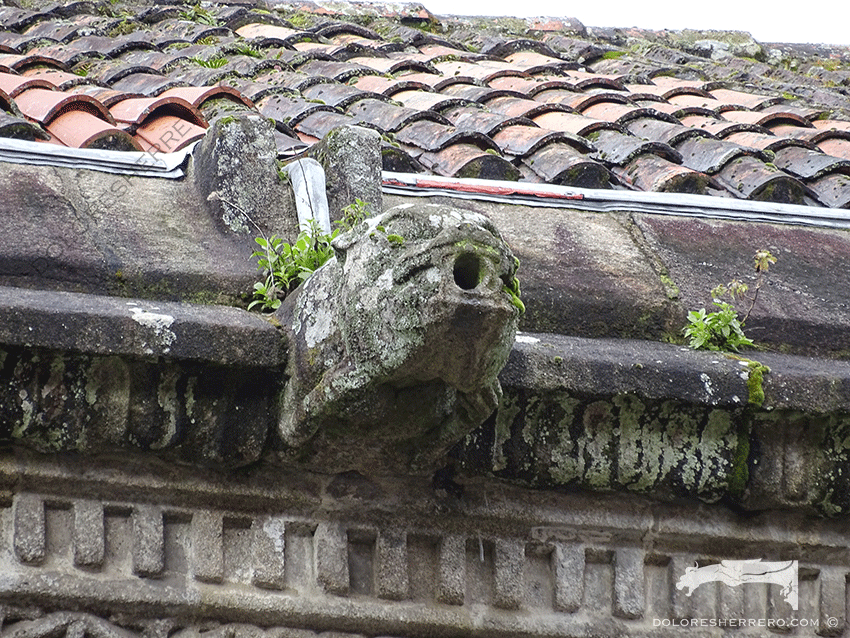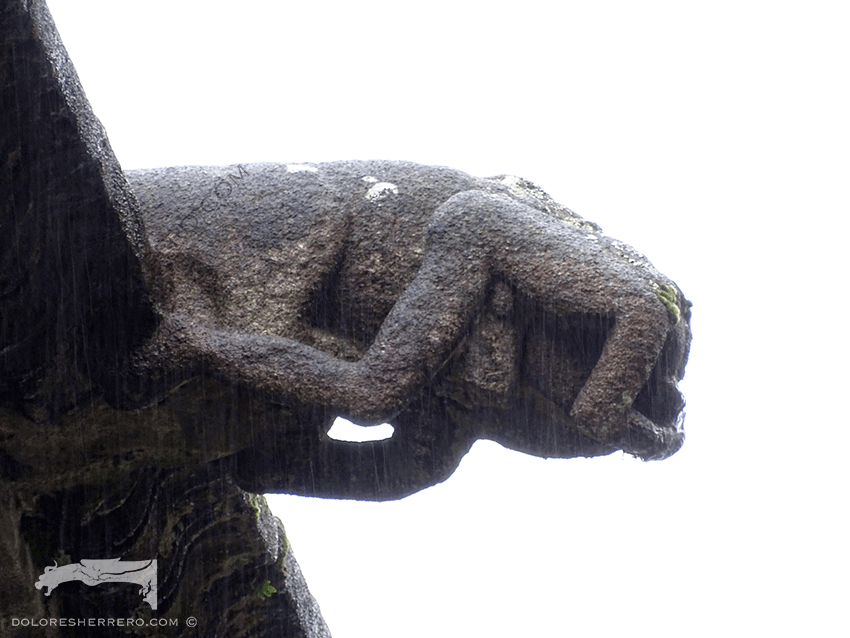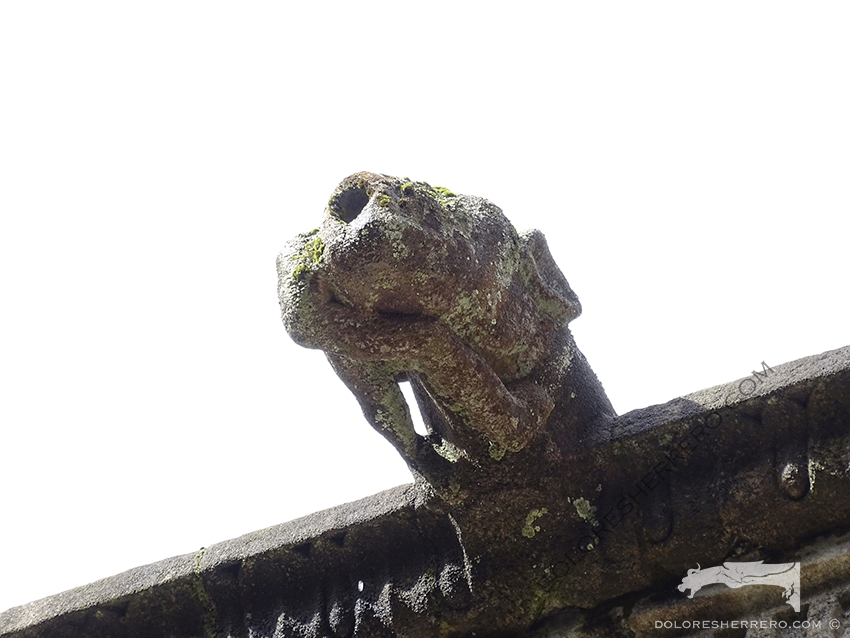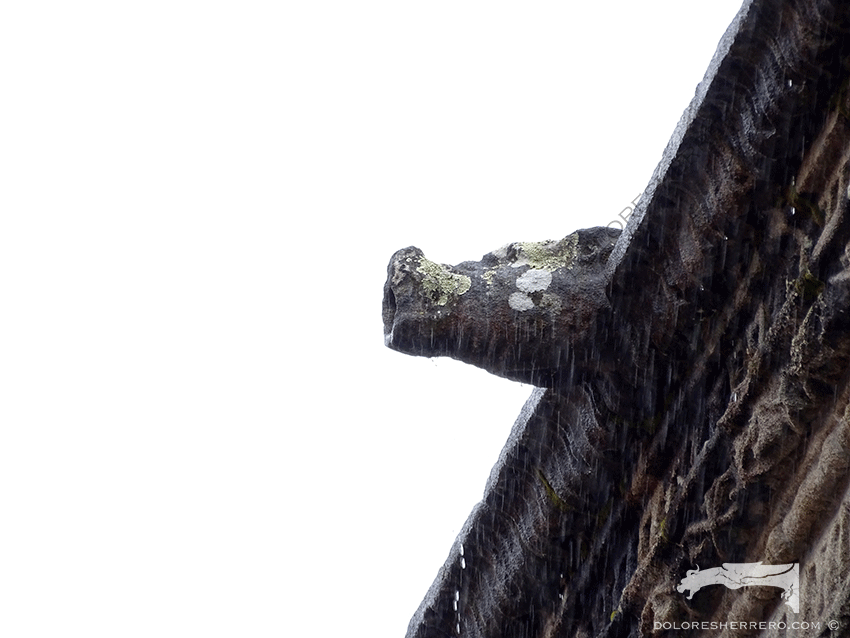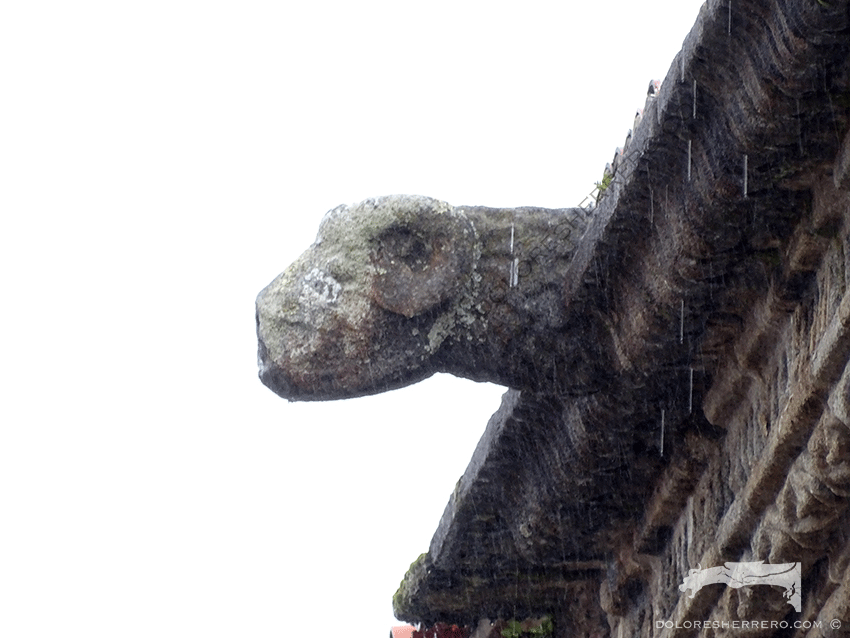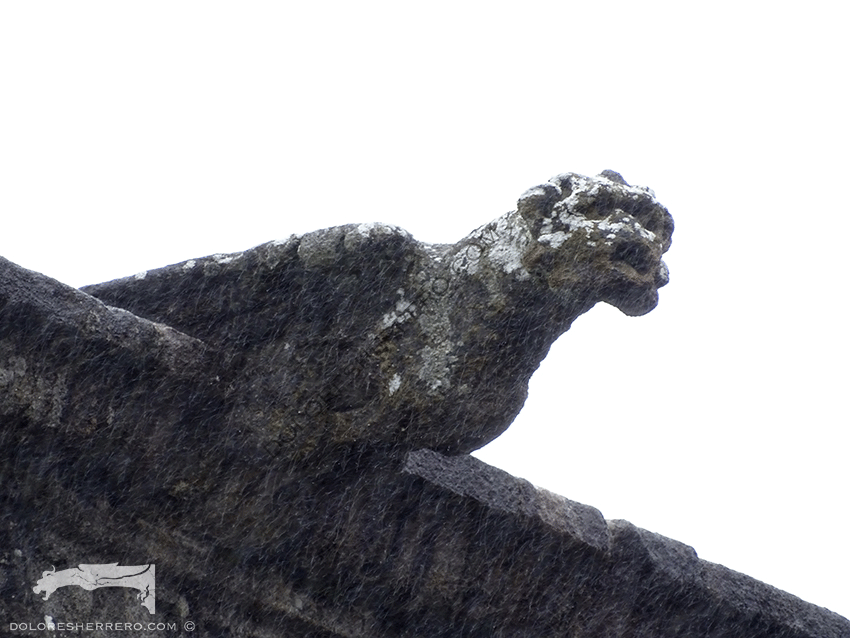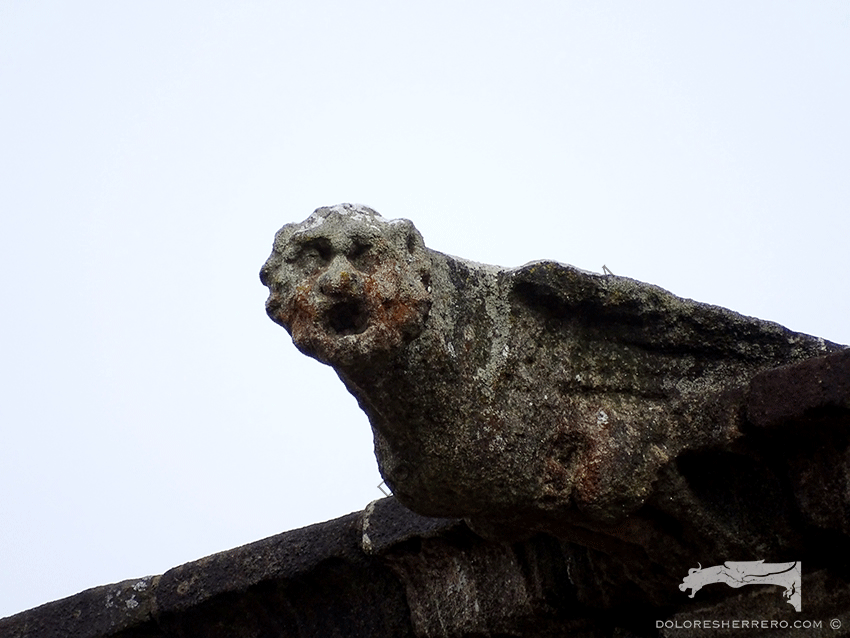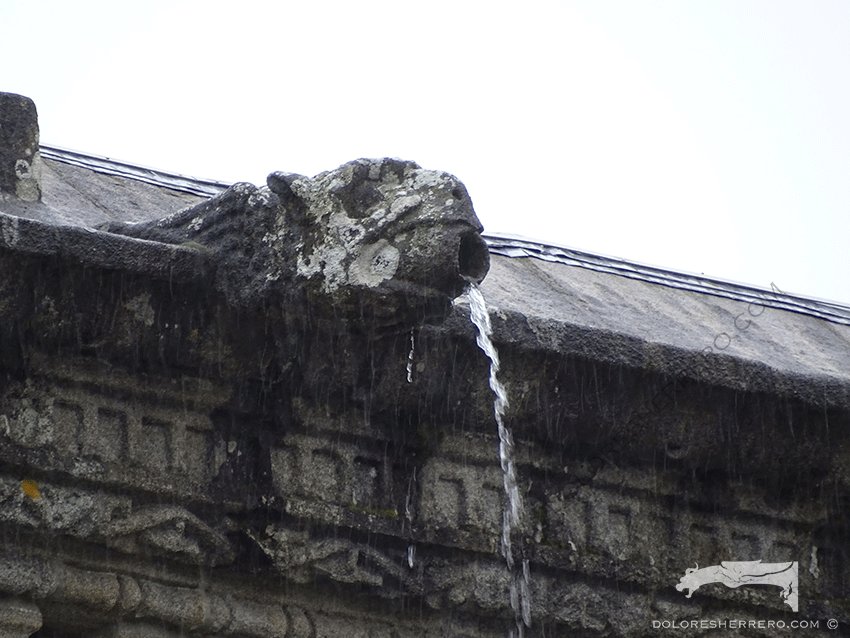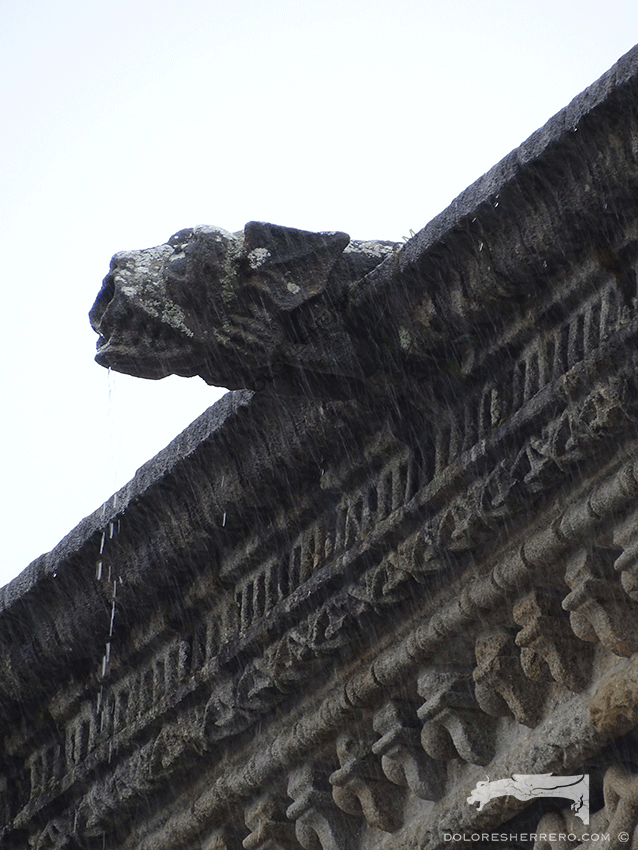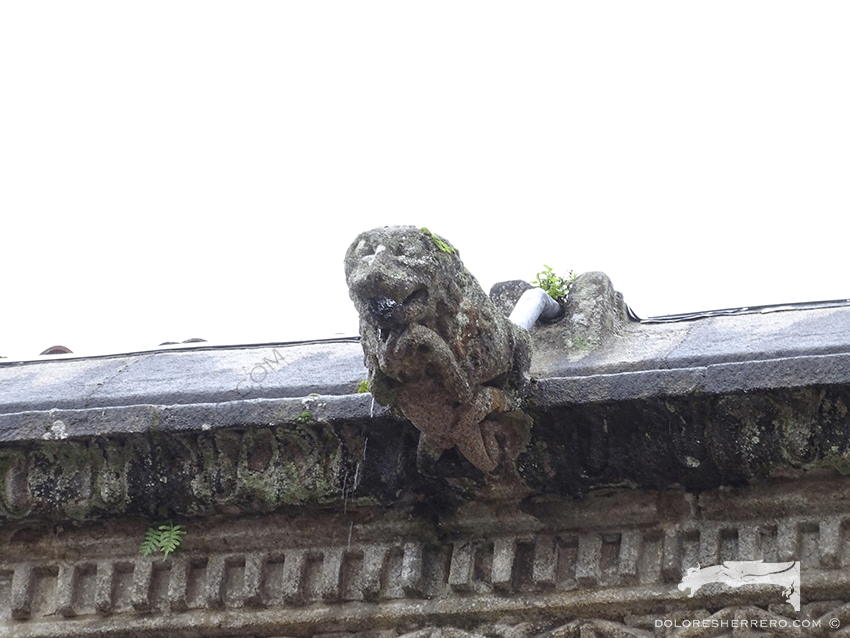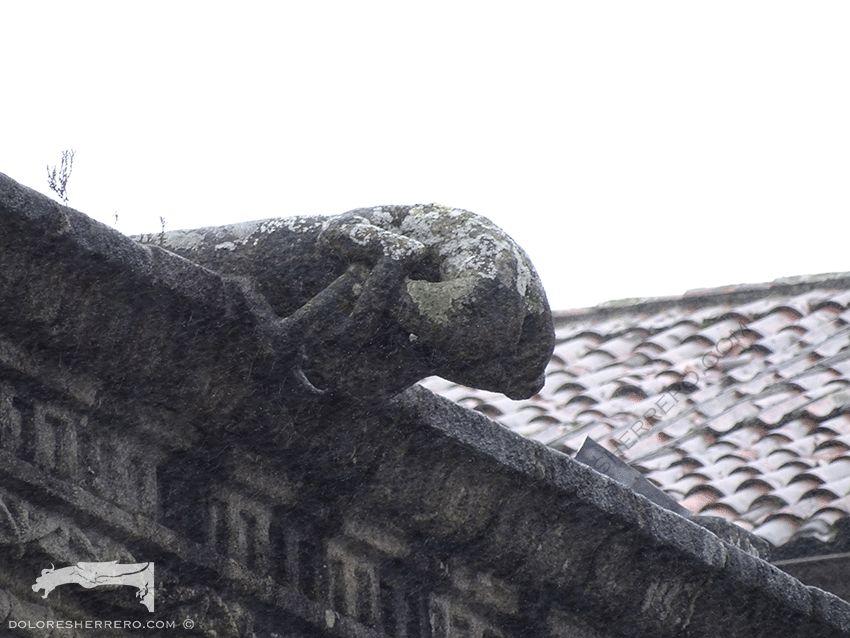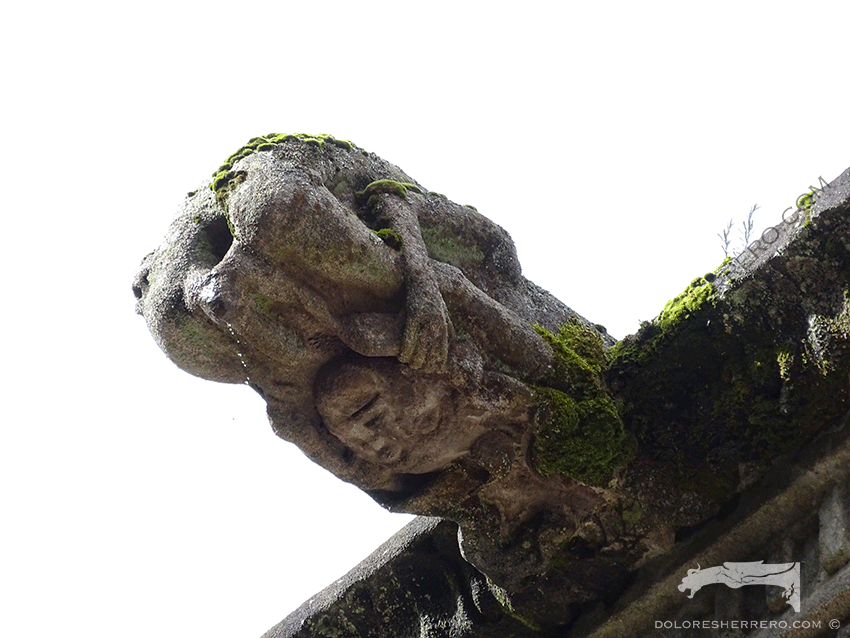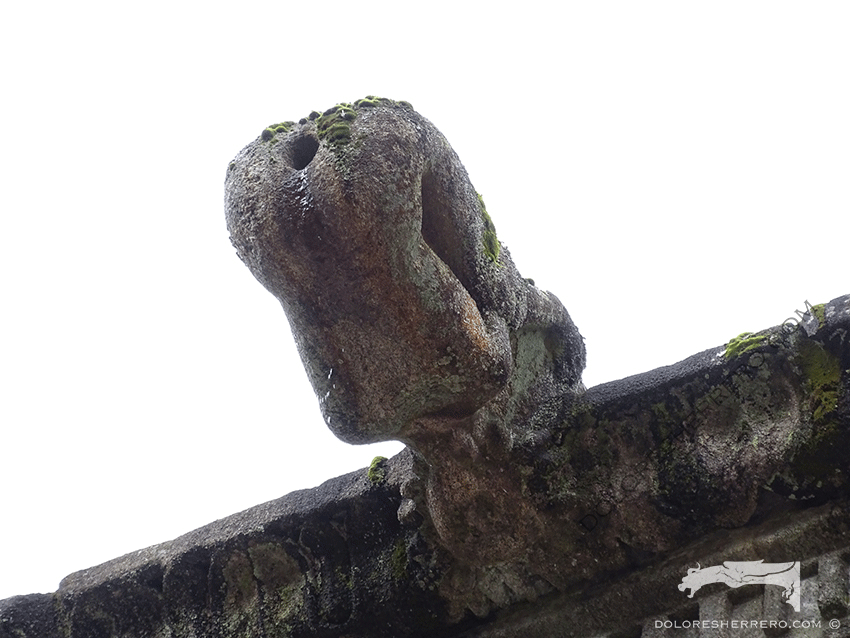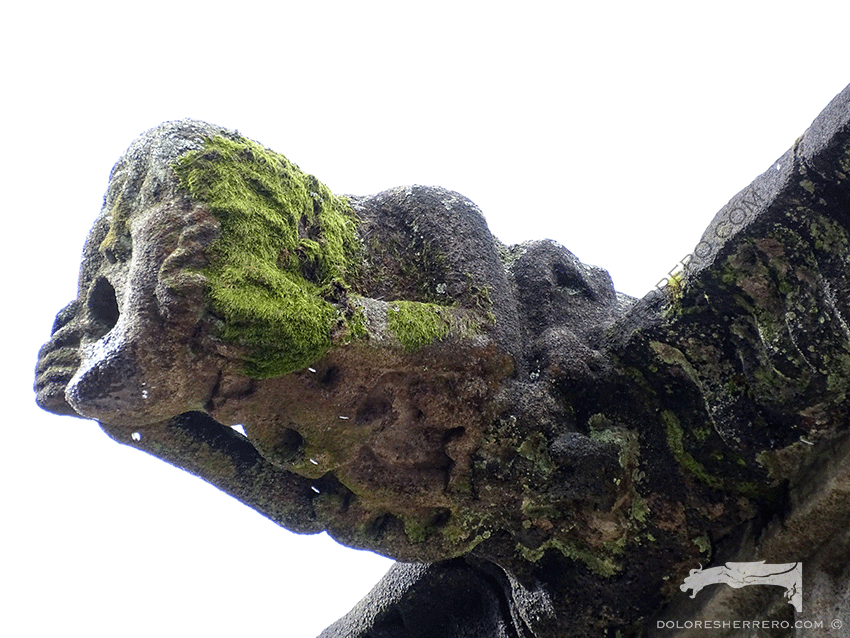Today we are returning to Galicia to discover some amazing and imaginative gargoyles: the gargoyles of the Royal Hospital of Santiago de Compostela (Spain).
When the Catholic Monarchs visited Santiago de Compostela in 1486, they realised that the city needed a hospital to care for the sick pilgrims arriving along the St. James’ Way (Camino de Santiago). Consequently, they commissioned Enrique Egas to construct a hospital, and work began in 1501. In 1931, this magnificent building was declared a historic and artistic monument, and since 1954, it has served as a parador (luxury, state-owned hotel) called the “Hostal dos Reis Católicos”.
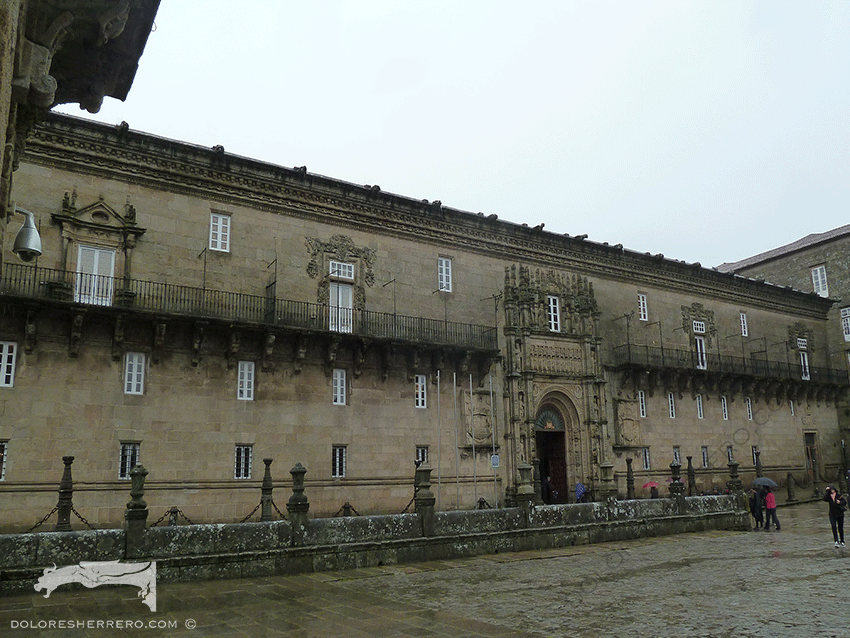
The Gargoyles of the Royal Hospital and their Iconography
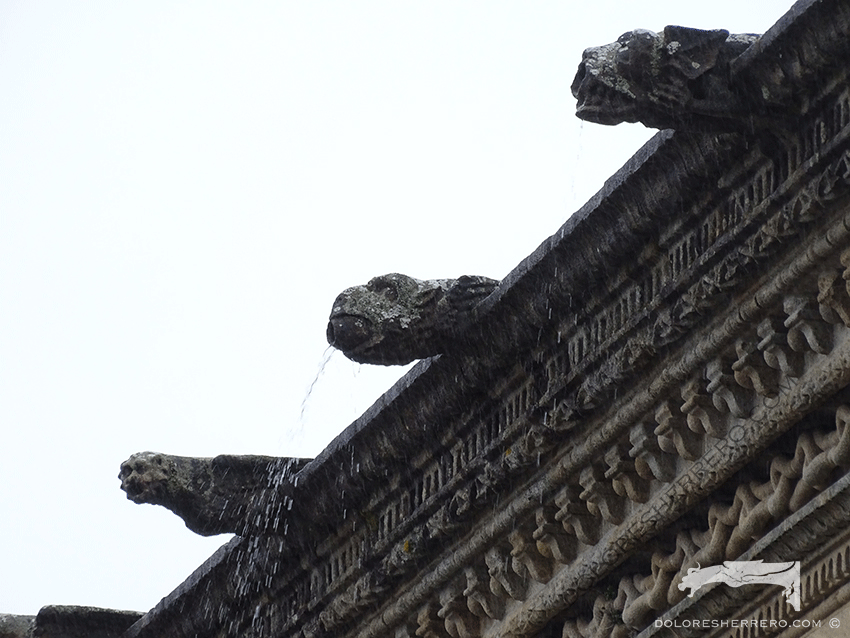
Among this building’s many attractions are the gargoyles that surround its entire perimeter. We photographed these gargoyles on the same day that we visited the gargoyles of the Monastery of San Martín Pinario, and so, as we told you in the post about those gargoyles, we were caught out in a huge downpour, as is to be expected in Galicia. Interestingly, some of the gargoyles of the Royal Hospital resemble those of this latter monastery. It seems that the Benedictine monks commissioned the Portuguese architect Mateus Lopes –who had previously worked in Santiago as master builder of the Royal Hospital– to design the monastery church, the first stone of which was laid in 1590. It is also striking that several gargoyles in the monastery are similar to those of the monastery of Batalha in Portugal.
The gargoyles of the Royal Hospital mainly depict four types of figures: animals, winged quadrupeds, devils and humans. In general, the style is very similar, using diverse elements with sometimes fantastic connotations, as at San Martín Pinario. They are practically nothing more than heads, as the limbs are minuscule. The faces are generally plump and often sagging, with a flabby appearance. In most of them, the water drains through a stone tube that fits neatly into and protrudes from the mouths. However, there are other figures in a totally different style, creating a formal diversity that enriches the whole.
The animal heads are mostly dog-like in appearance (ears, fur, muzzles), but there are also figures with spiral horns, protruding eyebrows and leaf-shaped ears, with their hands in their mouths. Some are rampant, some have wrinkles –or what we call triple lips– collars, fangs or hands on their necks, and still others incorporate small creatures. Some of these latter are naked human figures that seem to cling to the gargoyle’s body, while another looks like a leaf or a small reptile that reaches up to the mouth; small beings with the generally negative, evil connotations that often accompany gargoyles.
There is also a ram and a head with a pig’s snout. As a curiosity, Mariño Ferro notes that the pig symbolises laziness because it is useless for work and is only interested in eating or wallowing in mud. Meanwhile, the ram, like the lamb and the sheep, was frequently used for sacrifice; the Jews offered it to Yahweh and the Romans to their gods.
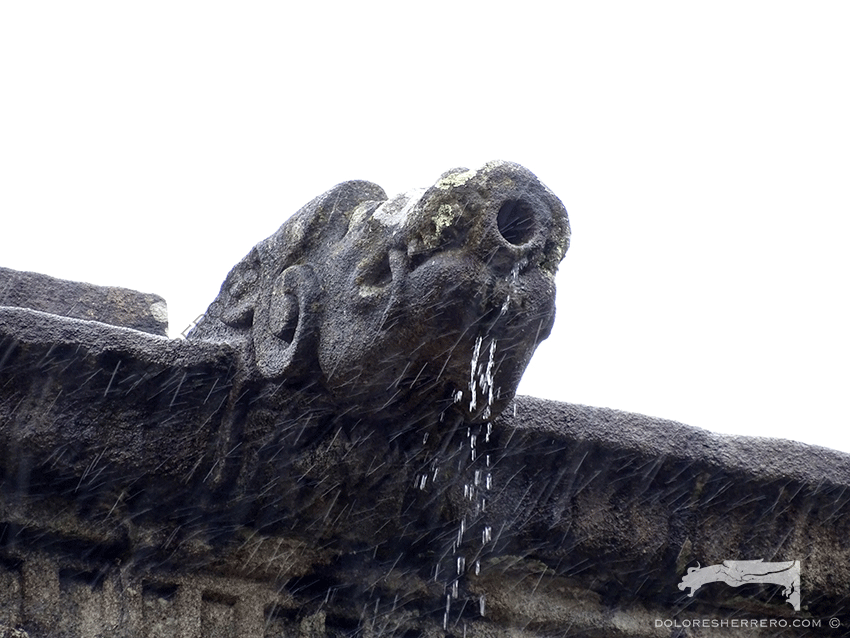
As we said at the beginning, the gargoyles of the Royal Hospital are remarkable not only for their peculiarity, but also for their stylistic differences. Although the gargoyles we saw previously show great similarity in terms of sculptural style, this resemblance changes in the figures of two magnificent winged quadrupeds. One of these two impressive figures has a slightly anthropomorphic face, while the other is worked in a similar style to the previous animals.
Of the devils, there are two that are similar; one has teeth, claws and large leaf- or bat-shaped ears, and its hands are on its neck, while the other has huge rectangular teeth and its hands are in its mouth. There is also an animal-like devil firmly grasping a diminutive naked human, a figure that surely symbolises the sinner who has fallen into the clutches of the devil as a result of his misdeeds.
Lastly, there are the human gargoyles. As we saw in a previous post, the spout is sometimes located in another part of the gargoyle’s body. For example, some gargoyles exhibit their anus, and the water flows from here as if they were defecating. Rebold Benton has remarked that this may be intended to keep the devil out of the church, or may simply be a medieval prank; some depict truly contorted postures. One more gargoyle, a human with its hands on its face and protuberances on its body, completes the ensemble of human figures.
As we discussed in the entry dedicated to the Monastery of San Martín Pinario, Santiago does not leave its visitors unmoved. Its magic, legends and folklore are fascinating. Its art, its history, its traditions and the St. James’ Way that starts from so many different places, all reveal a unique and superb part of Spain’s heritage. A land of magical beings that are also represented in its gargoyles, some of them covered in a radiant green moss that endows the figures with colour, enchantment and even more beauty.
As we said at the time, Galicia is a land of water. Not even photographs remain unscathed by the veil that water leaves wherever it appears. It is a land of rain, with water spouting from its amazing gargoyles, which we were fortunate enough to see in operation on our unforgettable trip to Santiago de Compostela.
Bibliography consulted
MARIÑO FERRO, X. R., El simbolismo animal. Creencias y significados en la cultura occidental, Madrid, Ediciones Encuentro, 1996.
REBOLD BENTON, J., Holy Terrors. Gargoyles on medieval buildings, New York, Abbeville Press, 1997.
VIGO TRASANCOS, A., “La iglesia monástica de San Martín Pinario en Santiago de Compostela. Proyecto, fábrica y artífices”, Compostellanum, Vol. XXXVIII, Números 3-4 (1993), pp. 336-361.

Doctor of Art History and researcher specializing in the study of gargoyles.
I am Dolores Herrero Ferrio, and my thesis, “An Approach to the Study of Gargoyles of Gothic Cathedrals in Castilla and León”, is dedicated to the study of these fascinating figures.
If you like gargoyles and art history, you will also enjoy my book, “The Gargoyle and Its Iconography,” a book I have written with great care for those interested in the world of gargoyles.
I have created my own Encyclopedia of Gargoyles, a Gargopedia to share with you, where you will discover all the secrets and wonders of these enigmatic sculptures.
I hope you enjoy this Gargopedia as much as I have enjoyed creating it, and remember that each gargoyle has a story to tell, and here you will discover them all.
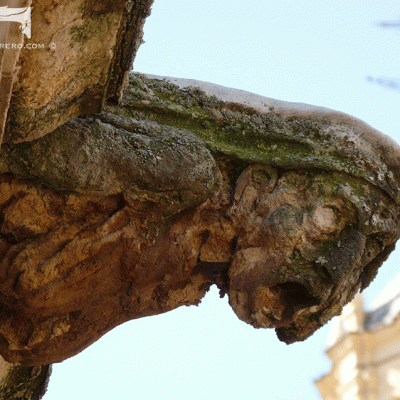 The Enigmatic Gargoyles of the Monterrey Palace in Salamanca
The Enigmatic Gargoyles of the Monterrey Palace in Salamanca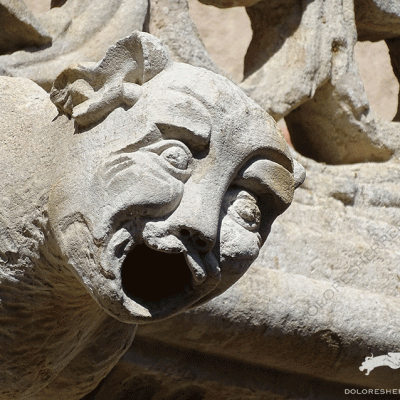 The Emblematic Gargoyles of Salamanca’s Casa de las Conchas
The Emblematic Gargoyles of Salamanca’s Casa de las Conchas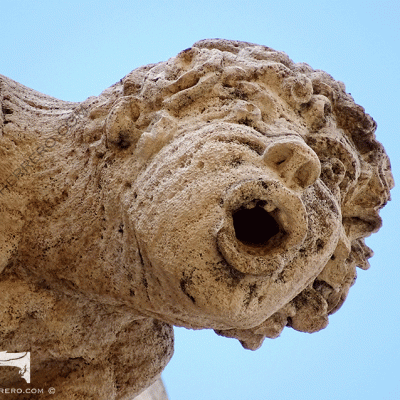 The Imposing Gargoyles of Valencia’s Lonja: Architectural Splendor and Symbolism
The Imposing Gargoyles of Valencia’s Lonja: Architectural Splendor and Symbolism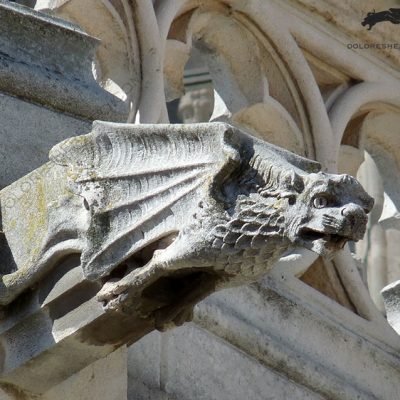 Imposing Gargoyles at the Head of Palencia Cathedral
Imposing Gargoyles at the Head of Palencia Cathedral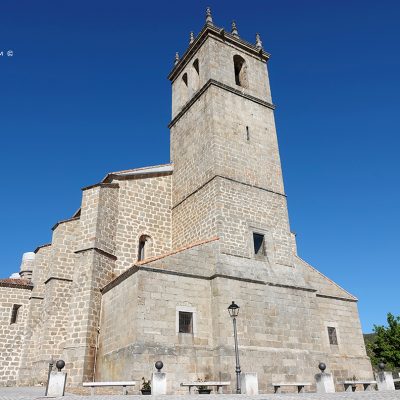 The Gargoyles of Robledo de Chavela’s Church, Spain: Stone Guardians of Madrid’s Skies
The Gargoyles of Robledo de Chavela’s Church, Spain: Stone Guardians of Madrid’s Skies